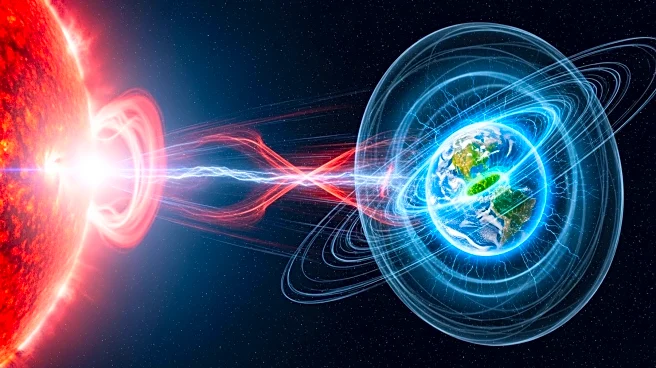What's Happening?
Scientists from Nagoya University have reported that a rare solar superstorm, named Gannon, significantly impacted Earth's plasmasphere, compressing it to a record low. The event, which occurred on May
10-11, 2024, was the strongest geomagnetic storm in over two decades. The Arase satellite, launched by the Japan Aerospace Exploration Agency, was in an ideal position to capture data during the storm, providing the first continuous observations of the plasmasphere's severe compression and slow recovery. The storm forced the plasmasphere's outer edge inward from about 44,000 km to only 9,600 km above Earth's surface. Recovery took more than four days, the longest recorded since monitoring began in 2017. The storm also pushed auroras farther toward the equator, creating displays in regions like Japan and Mexico, where they are rarely seen.
Why It's Important?
The findings from this event are crucial for understanding space weather and its impact on technology. The compression of the plasmasphere can affect GPS accuracy, satellite operations, and radio communications. The prolonged recovery time due to a negative storm, which alters atmospheric chemistry, highlights the need for improved forecasting and protection of technology reliant on stable space conditions. These insights can help mitigate disruptions caused by future solar storms, ensuring better preparedness for industries and services dependent on satellite and communication technologies.
What's Next?
The research provides a foundation for further studies on the interaction between solar storms and Earth's plasmasphere. Scientists may focus on developing more accurate models to predict the effects of such storms on technology and communication systems. Additionally, there may be increased efforts to enhance satellite resilience and improve space weather forecasting to minimize disruptions during future events.
Beyond the Headlines
The study of solar superstorms like Gannon offers deeper insights into the dynamics of Earth's space environment. Understanding the link between negative storms and plasmasphere recovery can lead to advancements in atmospheric science and space weather prediction. This knowledge is vital for safeguarding technological infrastructure and maintaining communication networks, which are increasingly critical in a connected world.















